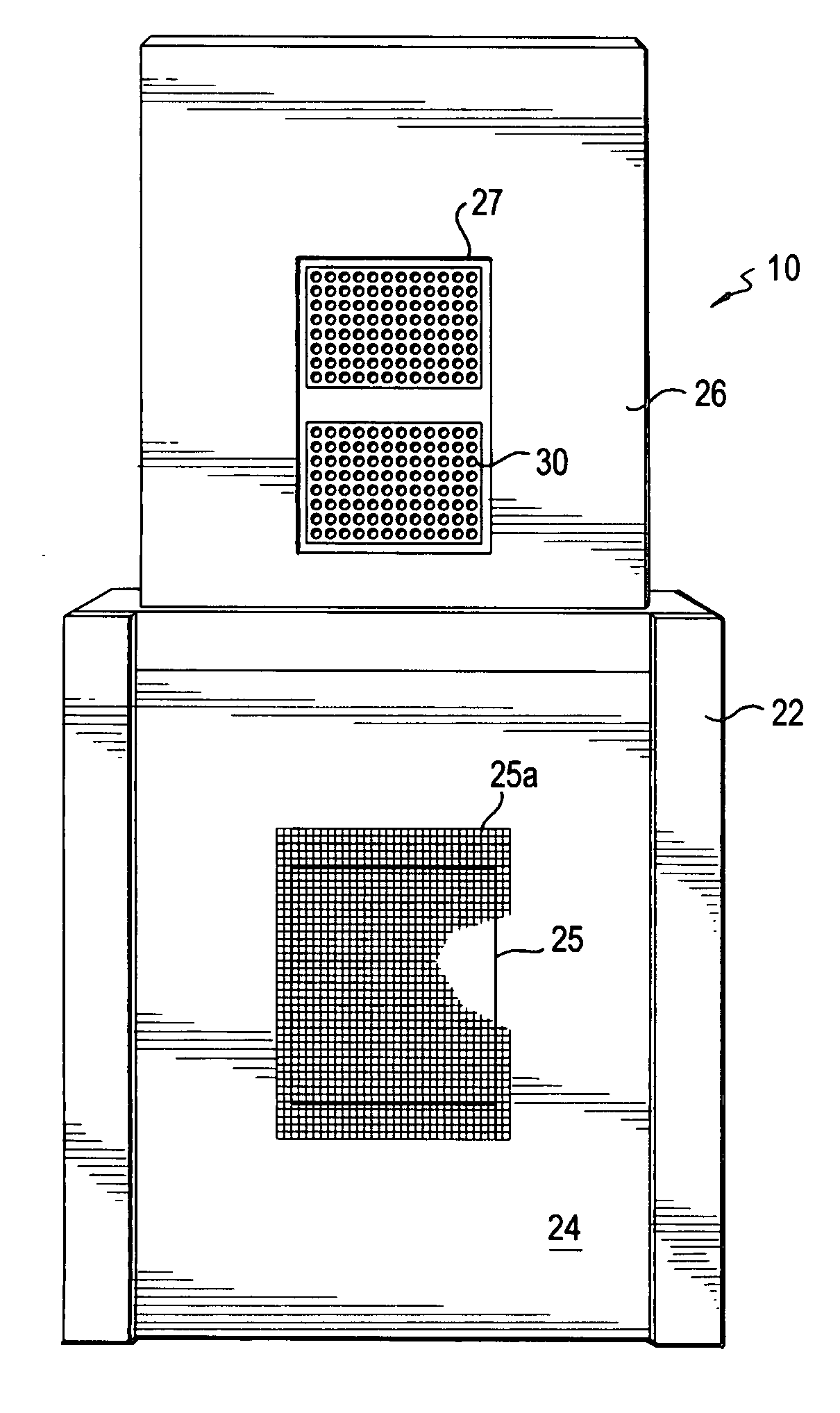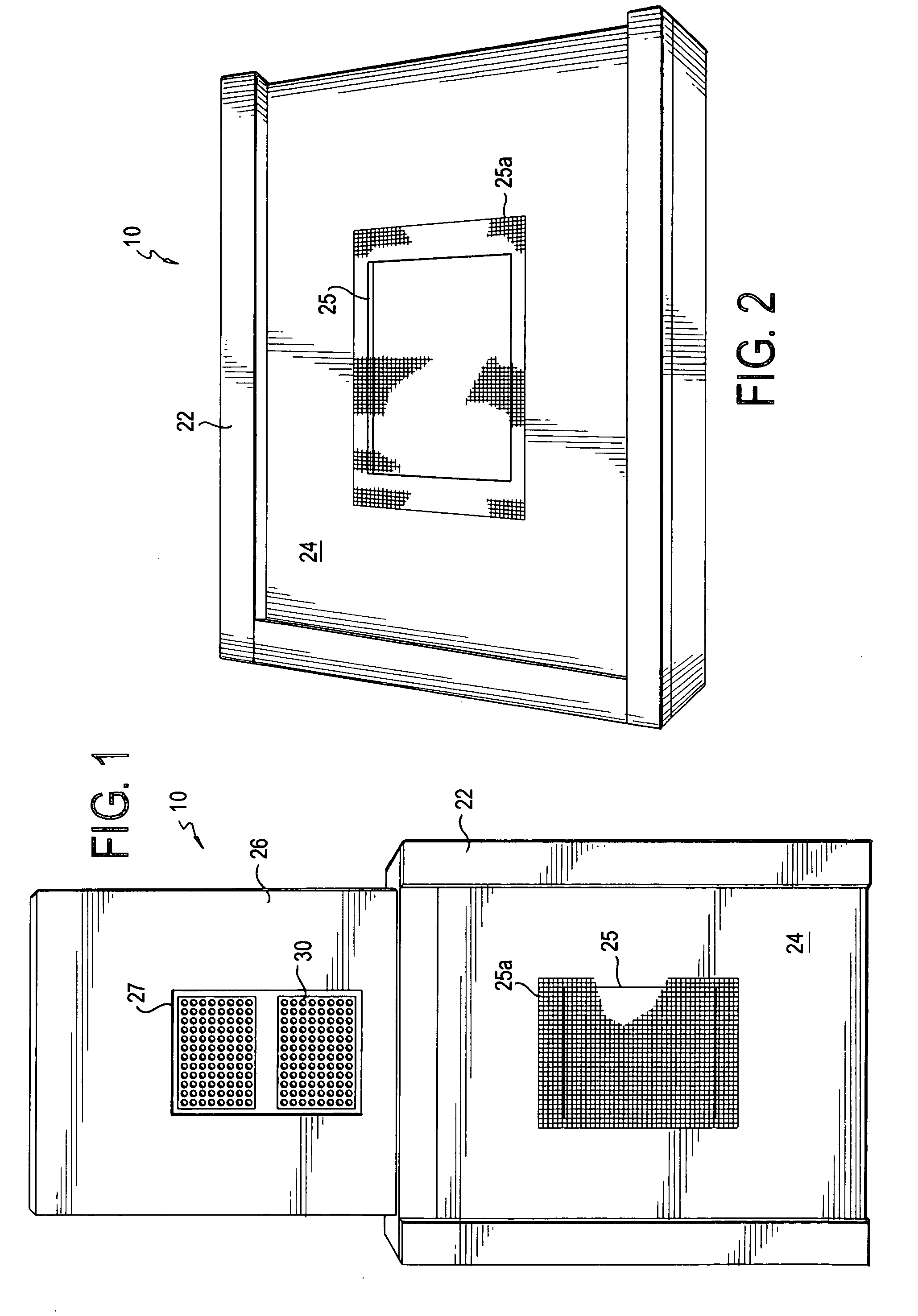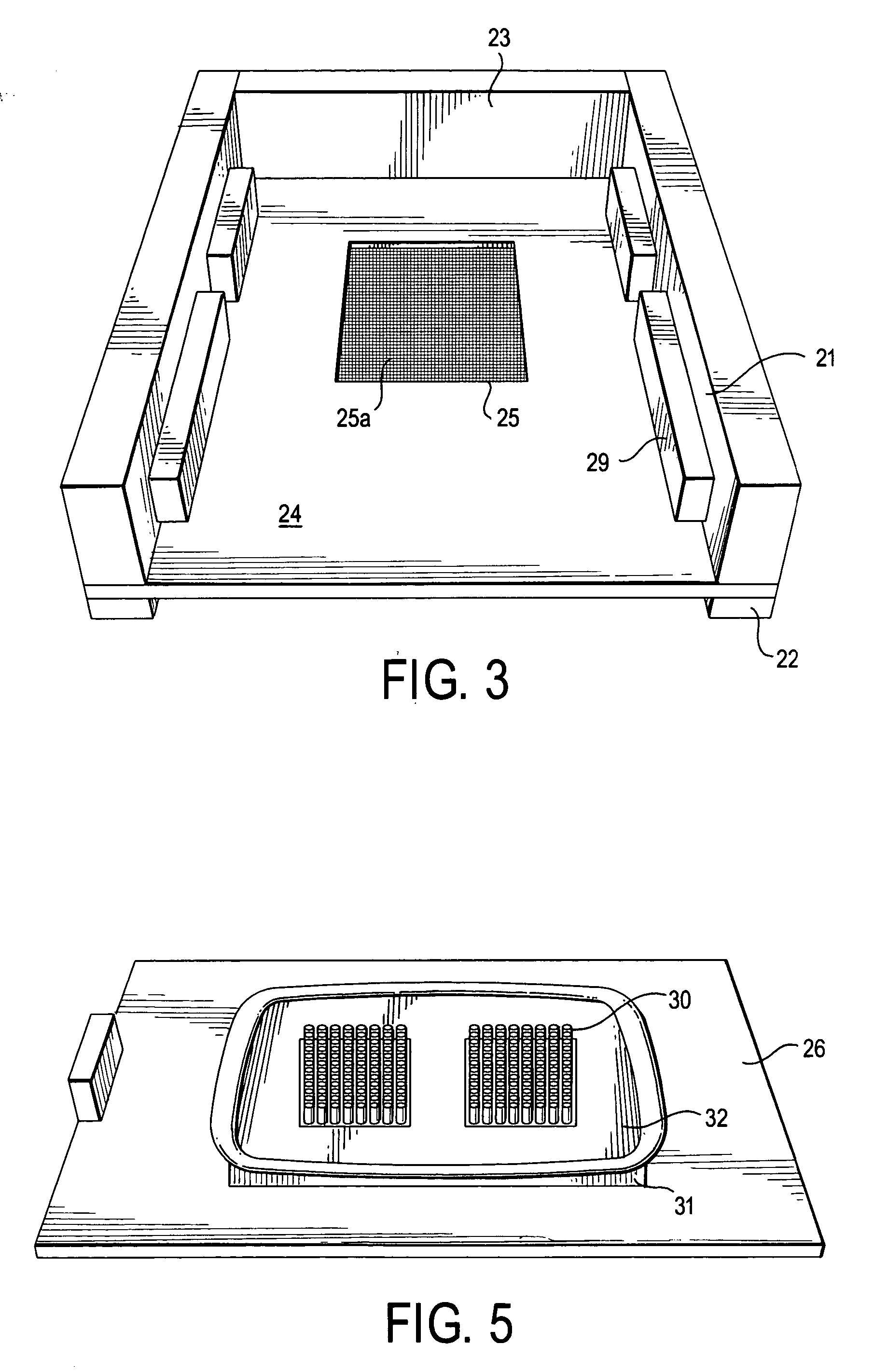In-hive trap and attractant composition for the control of the small hive beetle, Aethina tumida
a technology of attractant composition and beetle, which is applied in the field of beehive system, can solve the problems of affecting the beekeeping industry, and causing damage to both weak and strong colonies of small hive beetles
- Summary
- Abstract
- Description
- Claims
- Application Information
AI Technical Summary
Benefits of technology
Problems solved by technology
Method used
Image
Examples
example 1
[0046] The Small Hive Beetle attractant of the present invention was prepared by mixing about 70 grams of powdered pollen made by grinding pollen grains in a household blender, about 560 grams of the commercial pollen substitute BeePro® (MannLake, supra) in about a 1:8 ratio of powdered pollen: pollen substitute, and about 1 liter honey. To prepare the lure, the honey is warmed to about 60° C. After warming, the powdered pollen and pollen substitute were gradually added to the honey while stirring to obtain pollen dough. The dough was then allowed to cool to room temperature. The dough was then moistened with about 100 ml of distilled water through a wick suspended form a vial inserted into the dough. Approximately 300 adult beetles, preferably males or virgin females, were introduced into the dough to feed and to inoculate it with their yeast cells. The container is covered with plastic wrap or aluminum foil held in place by a rubber band and several pin holes are punched in the to...
example 2
[0047] Attractive activity of the lure of the present invention was tested in a horizontal dual choice wind-tunnel (about 1.85×0.66×0.66 M) according to the procedure described in Suazo et al (Apidologie, Volume 34, 525-533, 2003; herein incorporated by reference in its entirety) and Torto et al. (Apidologie, 2004; submitted). Wind speed was set at about 0.2 m / s inside the wind tunnel. Two 34-watt fluorescent tubes about 4 feet long were placed about 0.2 m above the wind-tunnel to provide illumination. Temperature in the bioassay room was maintained at about 27° C., with a relative humidity of about 40-60%. Tests were carried out between 6 pm and midnight, when beetle flight activity was at its peak. Odor sources were about 9 grams of the lure, as described above in Example 1, and a similar weight of the pollen dough without the yeast. Each was placed in a 2 liter glass jar outside the wind-tunnel.
[0048] A stream of purified air is passed through each chamber at a flow rate of abou...
example 3
[0050] The lure described above in Example 1 was tested in a PVC pipe trap (about 34 cm long×9 cm OD) at a beeyard (about 30 m long×30 m wide) in High Springs, North Central Florida in the summer. The beeyard had 35 mating nucs mounted on a wooden platform about 30 cm for the ground, and 4 double storey full hives arranged in a semi-circle at the edge of cleared field surrounded by pine and oak trees. Baited and unbaited traps were tested. The baited trap consisted of the PVC pipe trap containing about 50 grams of the moistened lure, with the unbaited trap laced with moisture only. Moisture was released into the trap through a braided cotton wick (Richmond Dental, Charlotte, N.C.) fitted through about a 0.5 cm hole in the cap of two plastic capped vials (BioQuip, supra) each filled with about 15 ml of distilled water. Baited and unbaited traps were hung on a T-shaped pole of about 1.5×1.5 m in the woods, with poles distributed around the hives to fit the semi-circular pattern of the...
PUM
 Login to View More
Login to View More Abstract
Description
Claims
Application Information
 Login to View More
Login to View More - R&D
- Intellectual Property
- Life Sciences
- Materials
- Tech Scout
- Unparalleled Data Quality
- Higher Quality Content
- 60% Fewer Hallucinations
Browse by: Latest US Patents, China's latest patents, Technical Efficacy Thesaurus, Application Domain, Technology Topic, Popular Technical Reports.
© 2025 PatSnap. All rights reserved.Legal|Privacy policy|Modern Slavery Act Transparency Statement|Sitemap|About US| Contact US: help@patsnap.com



